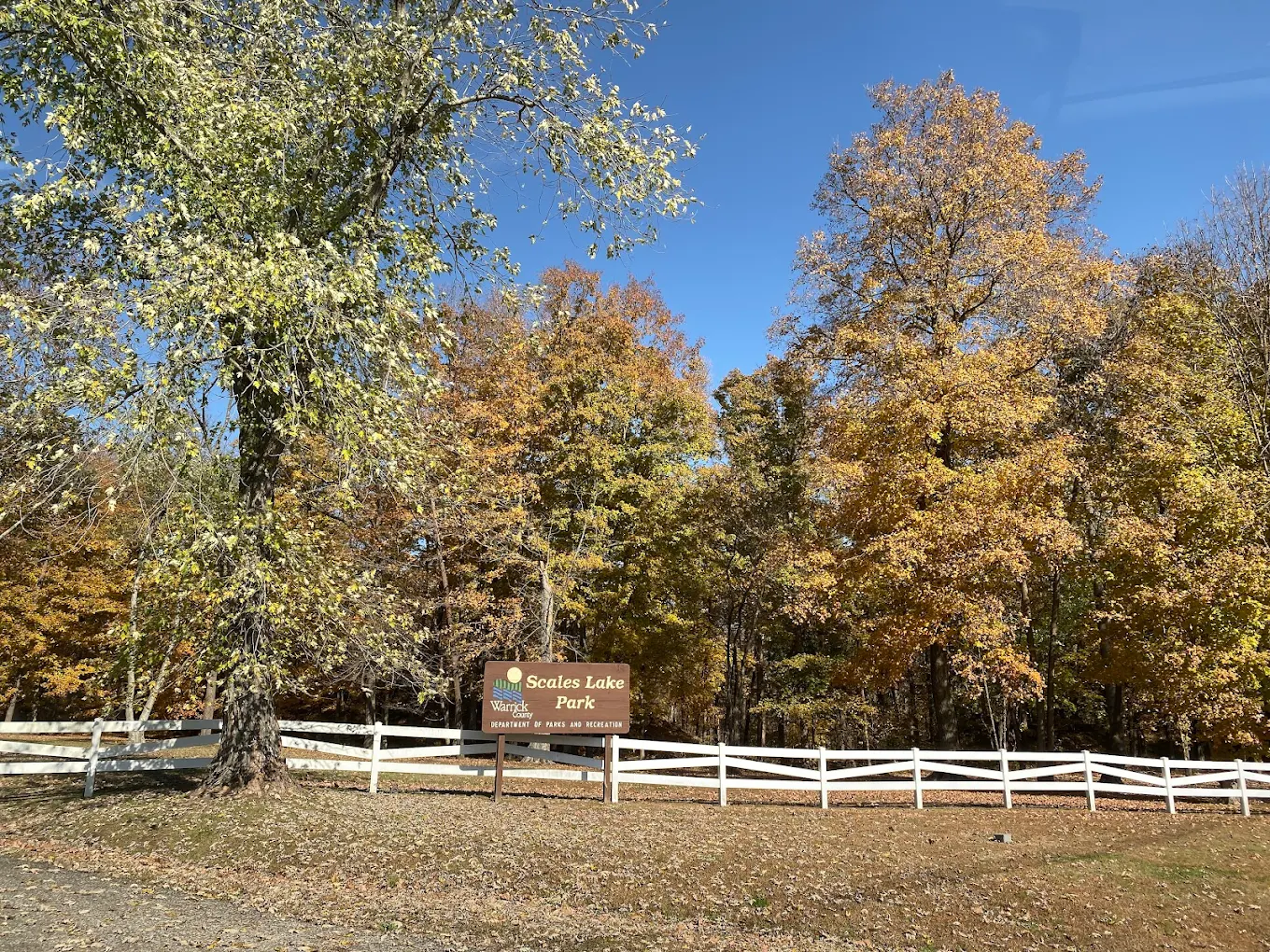From Industrial Site to Natural Oasis
In the rolling hills of southwestern Indiana, a remarkable transformation has created one of the region’s most surprising natural attractions. Scales Lake Park in Boonville showcases how former industrial sites can be reborn as beautiful recreational destinations. What was once an active limestone quarry has evolved into a stunning blue lake surrounded by dramatic cliffs and diverse wildlife habitat, offering visitors a peaceful retreat that few would expect to find in a former industrial location.
The Quarry’s Industrial Heritage
The site’s history as a limestone quarry reflects Indiana’s long tradition of stone extraction, an industry that helped build cities across the Midwest. For decades, workers extracted high-quality limestone from this location, creating the deep excavation that would eventually become the lake. The quarrying operation followed geological formations, resulting in the varied depths and irregular shoreline that give the current lake its distinctive character.
When quarrying operations ceased, nature began the slow process of reclamation. Groundwater gradually filled the excavation, while vegetation colonized the disturbed areas around the quarry’s edges. This natural succession process transformed an industrial landscape into a diverse ecosystem that now supports both aquatic and terrestrial wildlife.
A Diverse Aquatic Ecosystem
The lake supports a surprisingly diverse fish population that has established itself through both natural colonization and careful management. Bass, bluegill, and other warm-water species thrive in the varied habitat created by the quarry’s irregular bottom topography. The combination of shallow areas near shore and deep water sections provides different habitat zones that support various fish species and their prey.
Aquatic vegetation has established itself in suitable areas, providing cover for fish and supporting the base of the food web. The lake’s ecosystem demonstrates how quickly nature can adapt to and colonize new aquatic environments, creating complex biological communities in what was once a sterile industrial site.
The Science Behind the Blue Waters
The lake’s striking blue color results from a combination of factors related to its quarry origins. The significant depth of the water body, reaching depths of over 100 feet in some areas, affects how light penetrates and reflects from the water surface. The mineral content of the water, influenced by the surrounding limestone geology, also contributes to the distinctive coloration that makes the lake so visually appealing.
The clear water quality reflects the lake’s spring-fed nature and the filtering action of the surrounding limestone geology. Unlike many surface water bodies that receive agricultural runoff or urban contamination, the lake benefits from its isolated location and groundwater sources, resulting in the exceptional water clarity that allows visitors to see well below the surface.
Recreational Opportunities and Activities
Scales Lake Park offers a variety of recreational activities that take advantage of the unique lake environment. Fishing remains one of the most popular activities, with the lake’s diverse fish population providing opportunities for both novice and experienced anglers. The clear water and varied structure create excellent fishing conditions, while the peaceful setting adds to the overall experience.
Boating and kayaking allow visitors to explore the lake’s full extent and appreciate the dramatic cliff formations from water level. The calm conditions typical of the protected lake make it ideal for paddle sports, while the scenic surroundings provide a backdrop unlike any other lake in the region. Swimming is permitted in designated areas, though the deep, cold water provides a refreshing but sometimes surprising experience for visitors.
Wildlife and Natural Features
The park’s diverse habitats support a variety of wildlife species that have colonized the area as vegetation has matured. Bird species include both water-associated species like great blue herons and various ducks, as well as forest and edge species that utilize the varied habitat around the lake’s perimeter. The combination of open water, cliff faces, and surrounding vegetation creates multiple ecological niches.
The limestone cliffs that surround portions of the lake provide nesting sites for certain bird species and support unique plant communities adapted to rocky conditions. These cliff faces also create dramatic scenic views and interesting geological features that help visitors understand the area’s quarrying history and geological formation.
Park Development and Amenities
The transformation from abandoned quarry to public park required careful planning and development to ensure both safety and accessibility. Park facilities include boat launches, fishing areas, picnic facilities, and trails that allow visitors to explore different areas of the property. The development has been designed to complement the natural features while providing necessary amenities for public use.
Safety considerations unique to former quarry sites have been addressed through appropriate signage, barriers where necessary, and educational materials that help visitors understand both the opportunities and potential hazards associated with deep water environments. The park management balances public access with resource protection and visitor safety.
Conservation and Environmental Education
Scales Lake Park serves as an excellent example of successful land reclamation and habitat restoration. The site demonstrates how former industrial areas can be transformed into valuable recreational and ecological resources through natural processes and appropriate management. Educational opportunities highlight both the area’s industrial heritage and its current ecological value.
The park’s story resonates with broader themes of environmental restoration and sustainable land use, showing how communities can create positive outcomes from formerly degraded sites. This transformation model has applications for similar projects throughout regions with industrial heritage.
Seasonal Beauty and Photography
Each season brings different aspects of the lake’s beauty into focus. Spring showcases wildflower blooms and the return of migratory birds, while summer offers the full blue intensity of the lake waters against green vegetation. Fall provides spectacular color contrasts as surrounding trees change, and winter creates stark, dramatic scenes with the blue water contrasting against snow-covered landscapes.
The unique combination of water, cliffs, and varied vegetation makes the park a popular destination for photographers seeking unusual Indiana landscapes. The interplay of light and water throughout the day creates constantly changing photographic opportunities.
Whether visitors come for fishing, boating, photography, or simply to enjoy a peaceful natural setting, Scales Lake Park offers an unexpected gem that demonstrates nature’s remarkable ability to reclaim and transform even the most dramatically altered landscapes into places of beauty and ecological value.




